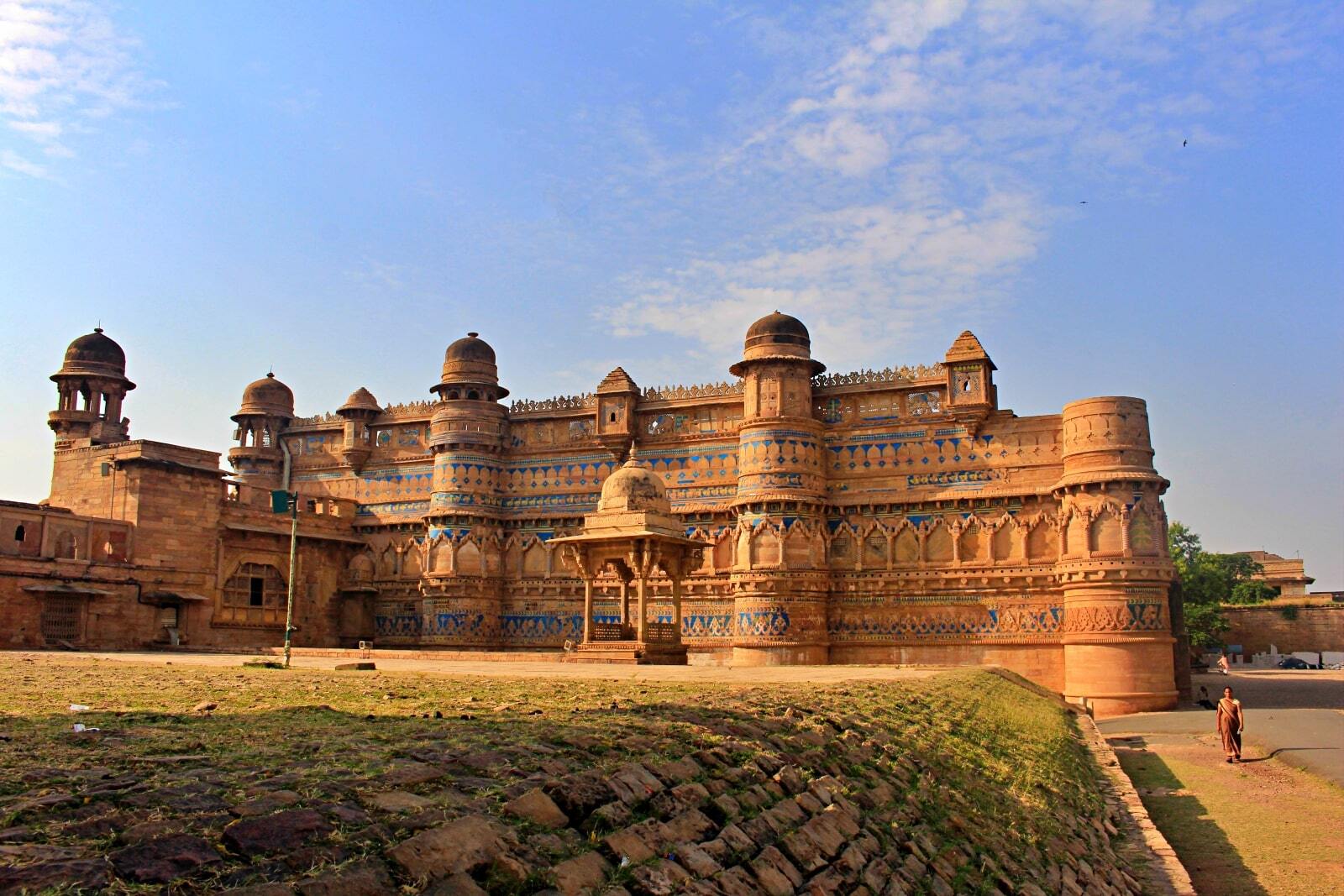Secrets And Stories Of India’s Gwalior Fort

Have you ever wondered about the hidden gems of India? Gwalior Fort is one such marvel that holds centuries of history within its walls. Perched on a rocky hill in Madhya Pradesh, this ancient fort offers breathtaking views and a deep dive into India's past. Built in the 8th century, it has seen countless battles, rulers, and dynasties. Walking through its gates, you can almost hear the echoes of bygone eras. From intricate carvings to grand palaces, every corner of Gwalior Fort tells a story. Ready to step back in time and explore this majestic fortress? Let's uncover its secrets together.
Secrets and Stories of India’s Gwalior Fort
Gwalior Fort, perched on a rocky hill in Madhya Pradesh, India, is a marvel of architecture and history. Known for its grandeur and strategic importance, this fort has witnessed centuries of battles, royal life, and cultural evolution. Let's dive into the secrets and stories that make Gwalior Fort a must-visit destination.
The Majestic Man Mandir Palace
The Man Mandir Palace, built by Raja Man Singh Tomar, is an architectural gem within Gwalior Fort. Its intricate carvings and vibrant tiles tell tales of a bygone era.
The Palace's Intricate Carvings: The walls of Man Mandir Palace are adorned with detailed carvings of animals, flowers, and geometric patterns. These carvings reflect the artistic excellence of the Tomar dynasty.
The Vibrant Tiles: The palace features colorful tiles that add to its beauty. These tiles, with their unique designs, showcase the craftsmanship of the artisans of that time.
The Hidden Tunnels: Beneath the palace, there are secret tunnels that were used by the royals to escape during attacks. These tunnels add an element of mystery to the palace.
The Enigmatic Gujari Mahal
Gujari Mahal, built by Raja Man Singh for his beloved queen Mrignayani, is another fascinating structure within the fort. This palace now houses an archaeological museum.
The Love Story: The story of Raja Man Singh and Queen Mrignayani is one of love and devotion. The palace stands as a testament to their bond.
The Archaeological Museum: Gujari Mahal now serves as a museum, showcasing artifacts from different periods of Indian history. Visitors can see sculptures, inscriptions, and other relics.
The Unique Architecture: The palace's architecture is a blend of Hindu and Islamic styles, reflecting the cultural amalgamation of that era.
The Sacred Sas-Bahu Temples
The Sas-Bahu Temples, dedicated to Lord Vishnu, are known for their intricate carvings and unique design. These temples are a fine example of medieval Indian architecture.
The Intricate Carvings: The walls of the Sas-Bahu Temples are covered with detailed carvings depicting scenes from Hindu mythology. These carvings are a testament to the skill of the artisans.
The Unique Design: The temples have a unique design, with one temple being larger (Sas) and the other smaller (Bahu). This design symbolizes the relationship between a mother-in-law and daughter-in-law.
The Spiritual Ambiance: The temples exude a serene and spiritual ambiance, making them a perfect place for meditation and reflection.
The Mysterious Teli Ka Mandir
Teli Ka Mandir, the tallest structure within Gwalior Fort, is an architectural wonder. Its unique design and historical significance make it a must-visit.
The Unique Architecture: Teli Ka Mandir combines elements of Dravidian and North Indian architectural styles. Its towering structure and intricate carvings are awe-inspiring.
The Historical Significance: The temple dates back to the 8th century and has witnessed many historical events. It stands as a symbol of the fort's rich history.
The Stunning Views: From the top of Teli Ka Mandir, visitors can enjoy breathtaking views of the surrounding landscape. The panoramic view is a treat for the eyes.
The Legendary Gwalior Fort Walls
The walls of Gwalior Fort are not just defensive structures; they are storytellers. These walls have witnessed countless battles and have many stories to tell.
The Battle Scars: The walls bear the scars of numerous battles fought over the centuries. These scars are a reminder of the fort's strategic importance.
The Secret Passages: Hidden within the walls are secret passages that were used by soldiers and royals. These passages add an element of intrigue to the fort.
The Panoramic Views: The fort's walls offer stunning views of the city of Gwalior and the surrounding landscape. The views are especially beautiful at sunrise and sunset.
Gwalior Fort's Timeless Allure
Gwalior Fort stands as a testament to India's rich history and architectural brilliance. Its majestic structures and intricate carvings tell tales of valor, culture, and artistry. Walking through its ancient corridors, you can almost hear the echoes of past battles and royal celebrations. The fort's strategic location and imposing presence have made it a significant landmark for centuries.
Exploring Gwalior Fort offers a unique glimpse into the past, making it a must-visit for history enthusiasts and travelers alike. The panoramic views from the fort's ramparts provide a breathtaking backdrop, perfect for capturing memories. Whether you're fascinated by its historical significance or simply drawn to its beauty, Gwalior Fort promises an unforgettable experience. Plan your visit and immerse yourself in the timeless allure of this architectural marvel.

